United held a call yesterday morning where CEO Oscar Munoz talked about the ways that the airline would cut costs and generate more money from customers.
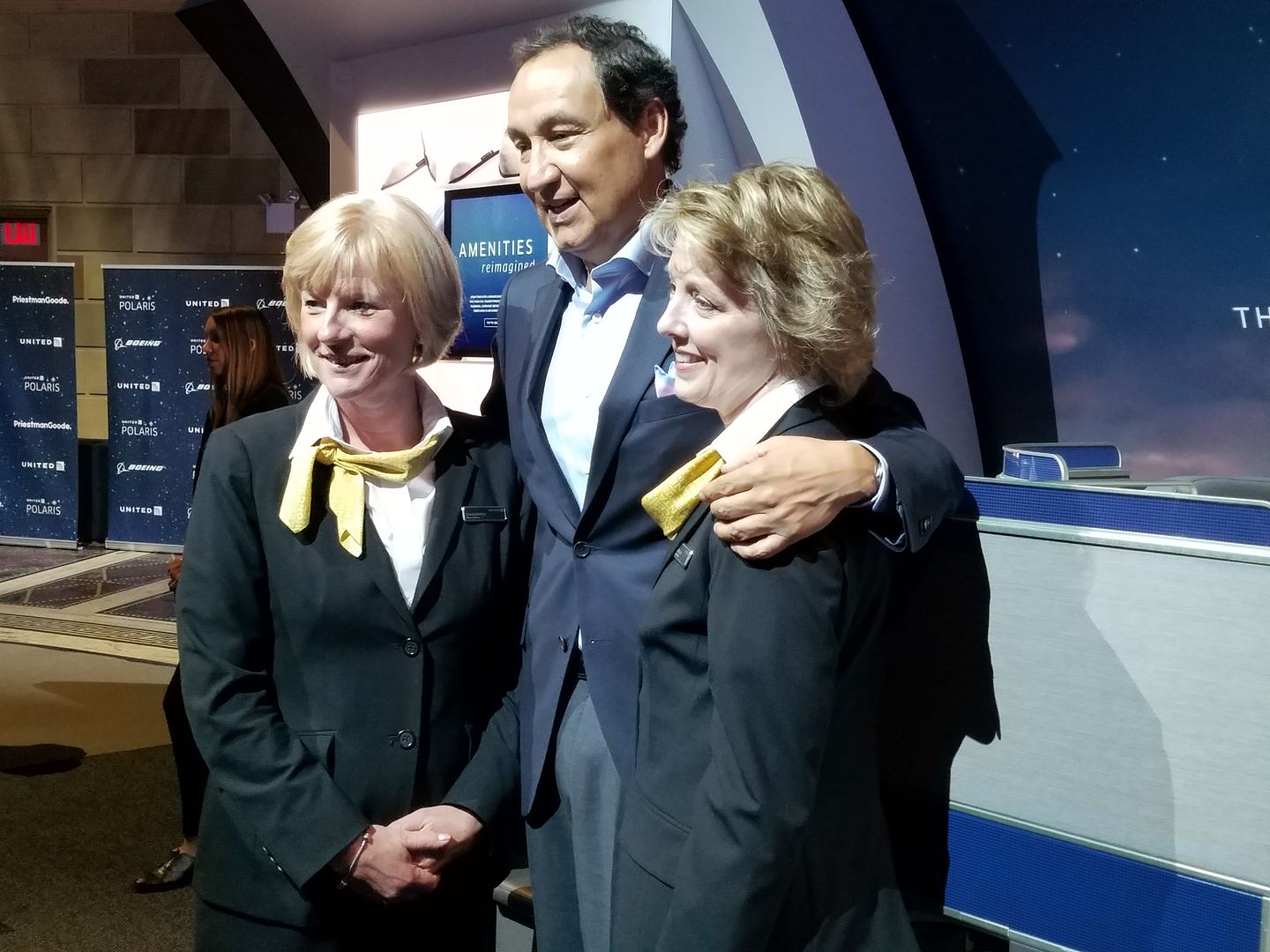
United CEO Oscar Munoz with United Flight Attendants
That’s never a great story from a consumer perspective – get more from customers, spend less on customers. Anything that emphasizes squeezing more seats into aircraft isn’t going to be popular and I cringe every time I hear the words “slim line seats.” I don’t want to sit in one of those for more than an hour.
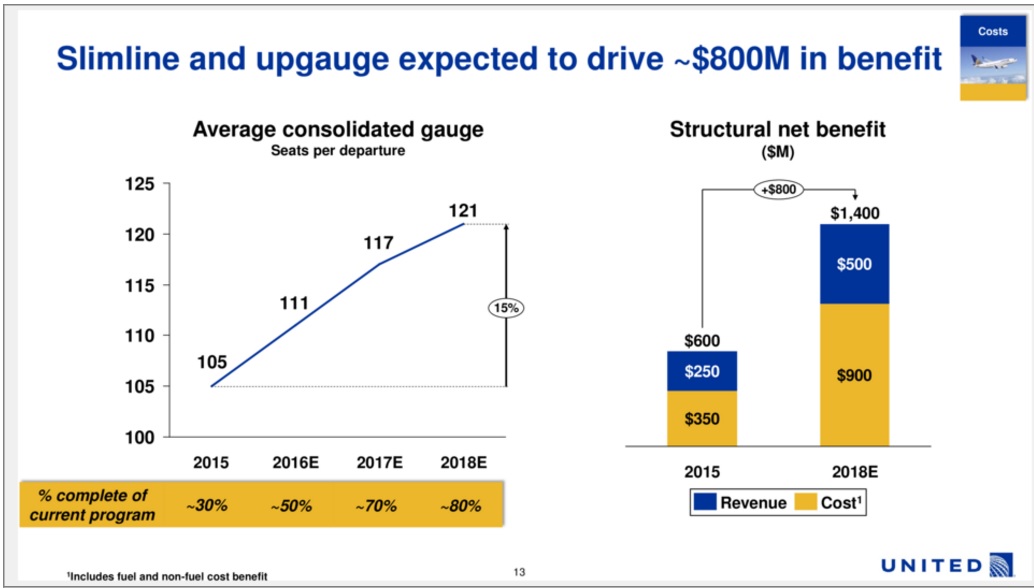
Much of the call contained things we already knew about. That’s not really a surprise, since they wanted to get to a really big number ($3 billion) in bottom-line improvement they needed to throw in the kitchen sink including things that have been ‘in the bag’ for quite some time like their re-upped credit card co-brand deal with Chase.
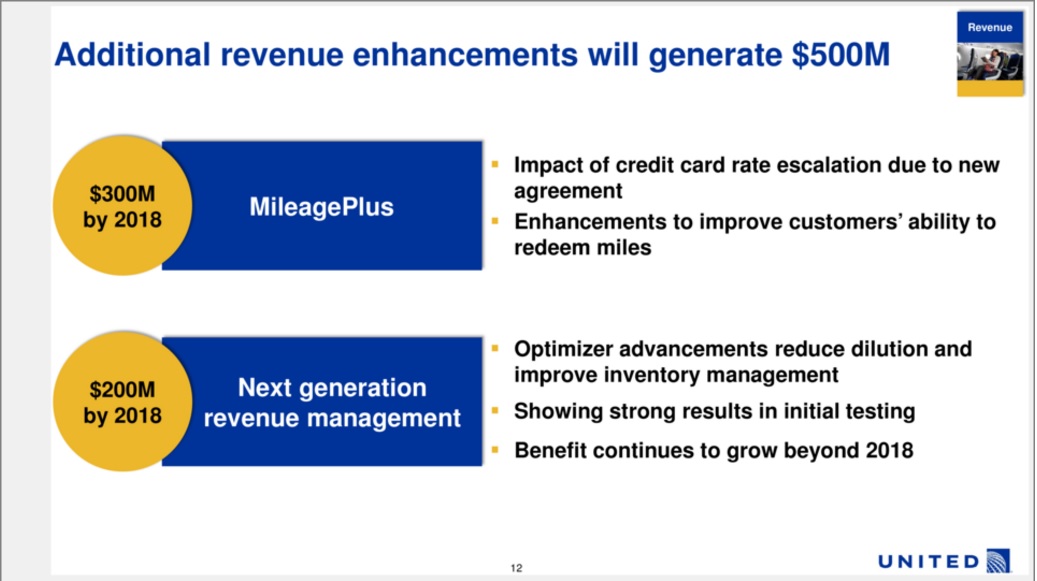
The sleight of hand here is that they’re using last year as a baseline of comparison, when we’re already halfway into 2016. If you use 2018 projections versus 2016 projections you get net improvement of $2 billion, even though that’s not really all financial improvement from today as much of 2016’s has already been captured.
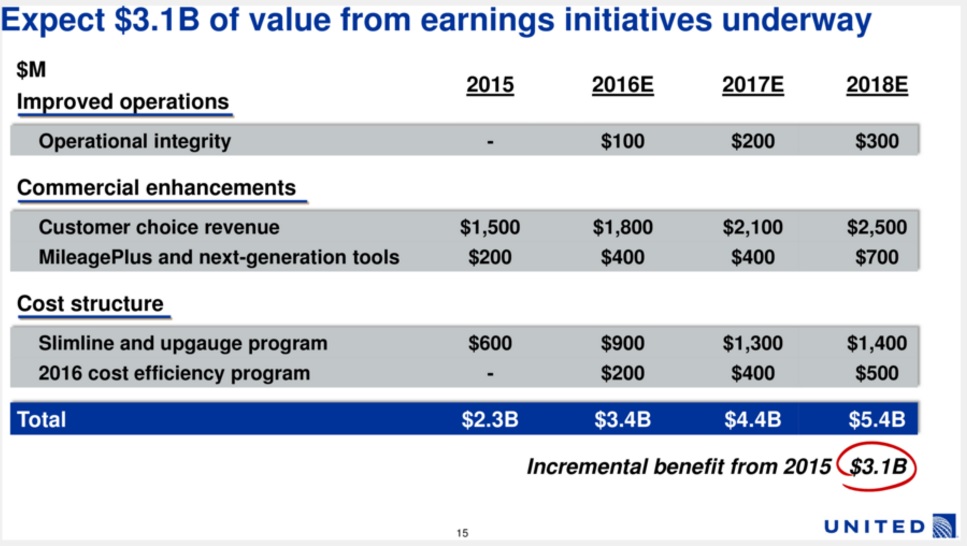
Operationally they say they’re increasing the size of aircraft and offering fewer frequencies. That’s good from a cost perspective, not as good for convenience.
United management kept coming back to needing a theory for each hub. It’s certainly striking that they gather financial analysts on a call not to tell them what their theory is, but that they need one. Reading between the lines, if they don’t understand how all of their hubs operate then perhaps they shouldn’t all exist as they do today.

United needs to continue to improve its operational performance, and part of that is going to be getting the airline onto a single maintenance system. Fewer operational delays will mean paying out less compensation to customers, less overtime to employees, and help it win back premium business.
While the airline plans to better monetize its premium products — economy plus and premium cabin – there is at least a continued commitment to premium products, including increasing the number of premium seats in certain business markets.
Like at American, United will be following Delta’s lead with basic economy later this year. And they talked about their Gemini system replacing existing demand forecasting – similar to recent comments by American President Scott Kirby.
Selling more premium seats, and getting customers to buy up from their new stripped down basic economy fares, are expected to contribute $1 billion in revenue in 2018.
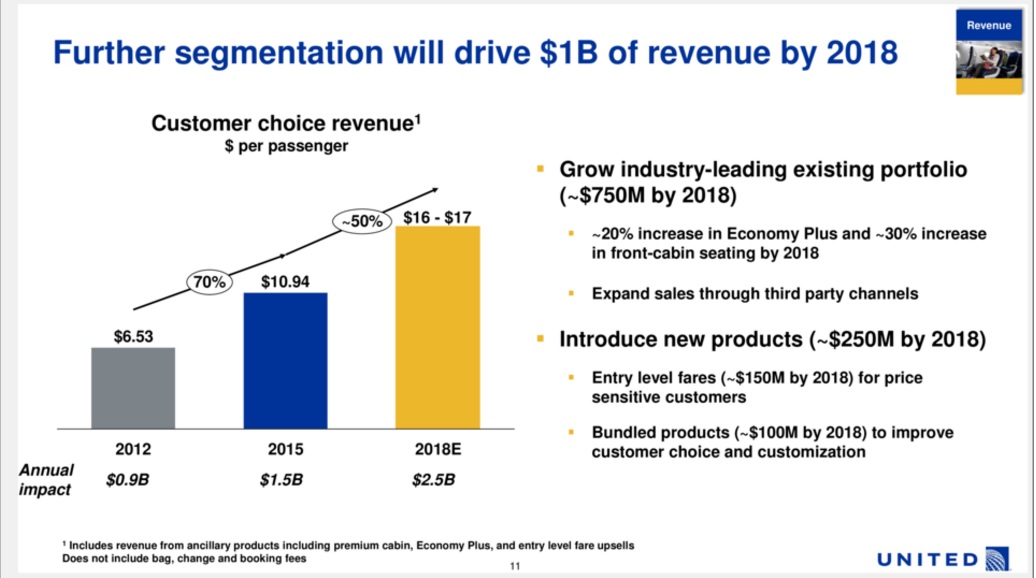
United wants to do more to attract premium customers, do less for non-premium customers in hopes those people will spend more, and cut costs out of an operation which still hasn’t fully completed its 2010 merger. That’s all to be expected, and for the most part things we’ve heard before. The question is how well they’ll execute on that, when their new premium international hard product won’t be consistently available across the network until 2021.

A better operation is key. They get that much. And improving their premium product is as well.
On the other hand squeezing more (less comfortable) seats into planes is hardly new, but it’s also not something to look forward to. Basic Economy — taking away things like advance seat assignments, and elite upgrades — is hardly something to look forward to.
United has a lot of catchup to do with the rest of the industry on both sides of the equation. My takeaway was that their plan seems to be to copy and catch up, rather than chart their own course.


United needs regime change, Munoz is not strong enough. They are not addressing their core weaknesses and while the other major airlines up their game United is becoming an afterthought.
Congressmen should not be allowed to travel in anything other than economy. Things will change very soon. Either more competition from outside carpets or less squeezing of passengers.
#scuminCongress
@Credit – Sorry, what does that have to do with this article.
@Gary – Delta paid for their operational improvements by further gutting SkyMiles. Hopefully United doesn’t do that here.
Changes you’ll like v2.
“Enhancements to improve customers’ ability to redeem miles”
Oh no.
Frankly, I can’t understand why one of the big three legacy airlines doesn’t chart its own course to stick out from the crowd. Become more like JetBlue–which is rapidly becoming my airline of choice for domestic and Latin American flights.
JetBlue has a standardized product, a simple booking system, and a customer friendly-fare policy. I know what I am getting, and I know the fares aren’t going to bounce around all over the place from hour to hour, day to day. Their crew is good–on a recent flight out of MEX I saw our pilot helping out at the desk near the gate for five minutes, before boarding the plane!. What’s holding the legacies back from pulling a JetBlue business model?
As if I needed another reason NOT to fly United . . .
Because one of our clients uses UA as their preferred airline I have had the (dis)pleasure of flying UA a lot (twice monthly) between CLT and ORD v.v. between Jan and May. I have charted their performance and literally every other flight has been delayed; from 30 minutes to 7 hours! I was so done with them that I obtained permission to ditch them despite the corporate contract. I am now using American who are far more reliable, have more flight options (not surprising because of CLT) and are not that different in cost.
In understand that planes are machines and that they can break. I also understand that weather can be a factor. But the number and severity of the delays compared to DL’s and AA’s operations is more than just “bad luck” or a coincidence. In the Jan – May time frame I also flew to Europe (Brussels, Rome, Berlin, London) and CLT – NY a few times; I used AA, AB, AZ, DL and BA and none of these flights suffered from the same number of delays.
For UA, the disinterested approach from the ground and plane crews regarding these delay’s leads me to believe they are so used to apologizing they just don’t care really anymore. So goodbye UA. I am very happy you’re planning a better future (as you sorely need one) but I am not going to be part of your experiment to figure it out. Call me in 2021 and we’ll see where you are.